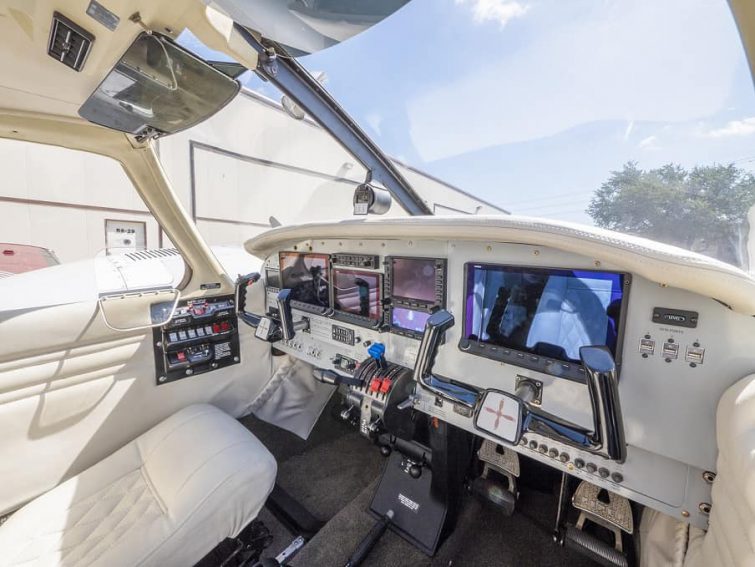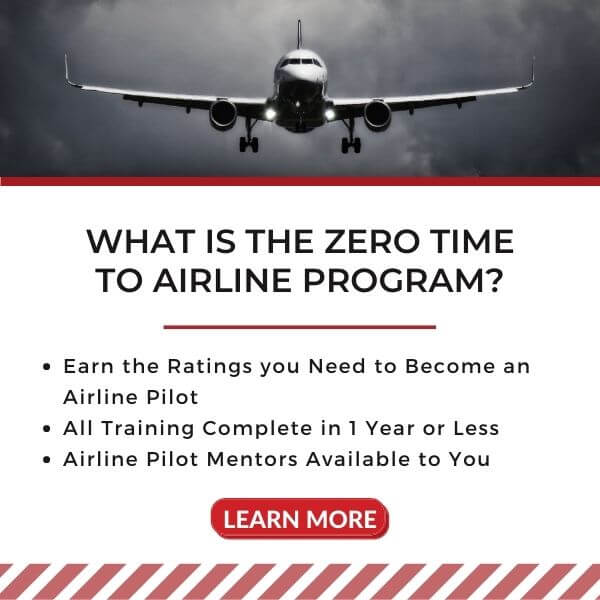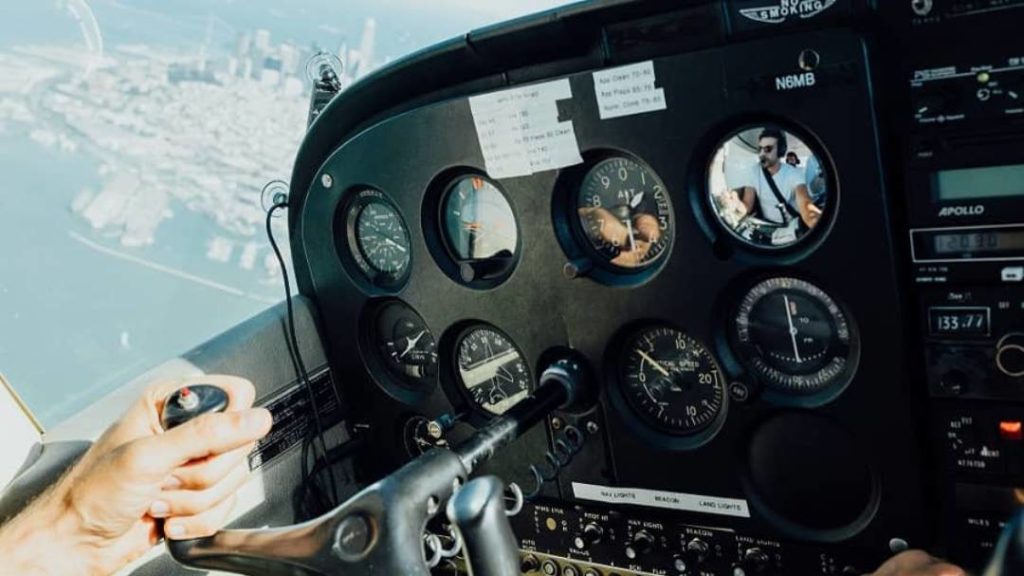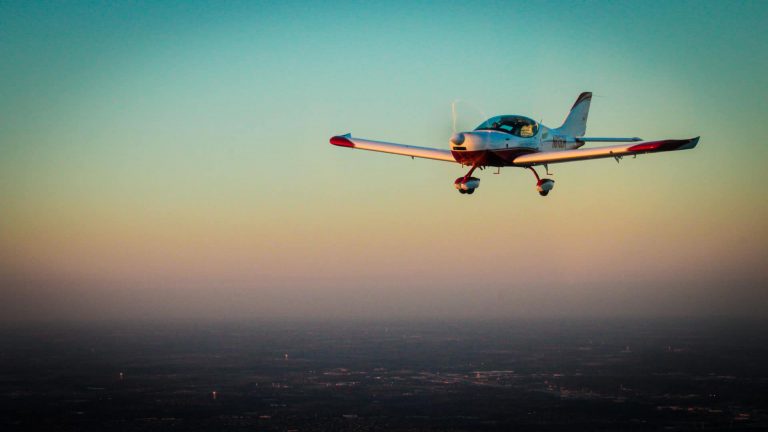how to become an airline pilot
Becoming a pilot can be an incredibly rewarding and joyful experience. But when you're first starting out on the journey it can feel a bit overwhelming.
This article is here to teach you how to become a pilot and give you a more complete understanding of everything you'll need to do to become a pilot.
Whether you're looking to become an airline captain one day or you simply want to fulfill your dream of earning your pilots certificate this guide will help you get started.
First and foremost you need to decide what type of pilot you'd like to be. Training varies based on the type of aircraft you plan on flying as well as the types of certificates you may need.
If you're pursuing your pilot's certificate purely for recreational purposes you may only need to obtain your private pilot certificate and instrument rating.
If you plan on flying commercially, you'll have to work your way through a few more ratings. There is also special licensing for gyroplanes, helicopters, gliders, balloons, and airships.
In this article, we'll focus on the steps necessary to become a pilot specifically.
How Long Does it Take to Become a Pilot?
The amount of time it takes to become a pilot will vary from person to person. If your goal is to get a private pilot rating and stop there you could likely complete all your training in a month.
If you are trying to become an airline pilot it will typically take about 2 years assuming you are training full time.
If you do your training part-time expect that process to take much longer.
How to Pick a Flight School
Choosing a flight school can be a challenging task. If you're going to stay in your local area, you're limited to the few flight schools close by.
If this is what you'll be doing, consider visiting the flight school and talking with the chief or assistant chief instructor to learn more about the school and what it offers.
There is also a lot of aviation Facebook groups for different areas across the U.S. You may want to join one in your area and ask people for recommendations.
If you're willing to relocate for your flight training, whether for the long term or for a popular accelerated training program, there are many more options. Arizona, Texas, and Florida are states with some of the biggest flight schools since they all offer fantastic year-round flying.
When learning how to become a pilot, one of the biggest things to consider when choosing a flight school is deciding if you need a Part 141 or Part 61 program.
Article continues below.


Part 141 and Part 61 are two different regulations under which flight instruction can be completed. Any flight instructor can train under Part 61, whether or not they are associated with a flight school.
Training under Part 141 regulations on the other hand can only be completed at schools approved by the FAA.
The requirements to earn your pilot's certificate are the same regardless of which training you fall under.
Part 141 schools, however, must have each part of their curriculum approved by the FAA and they are subject to audits.
Ultimately, look for a school you feel comfortable with and which is willing to work with you on your timeline.
Take A Discovery Flight
Once you have found a flight school you want to work with you'll need to take a "discovery flight."
This is a basic introductory flight where a certified flight instructor will talk with you about the basics of the plane and then take you up for a short flight.
In many cases, once you're up in the air, they'll let you take the controls for a few minutes to see what it's like to fly.

If you've never flown in a small airplane this will be a new experience and will help you decide fairly quickly if it's something you want to pursue (spoiler, you'll probably fall in love).
During your discovery flight, make sure you ask plenty of questions to fully explore if this is something you want to pursue.
What Qualifications Do You Need to Become a Pilot?
When Learning how to become a pilot, it's important to know what all of the requirements are to obtain your private pilot certificate.
The most basic requirements to earn your pilot's certificate are first, you must be able to read, write, speak, and understand English.
You must also be at least 17 years old, and log a minimum of 40 hours during your flight training with a certain portion of that being solo time. You also have to pass a knowledge test and your practical exam.
Medical Certificate
The medical requirements are perhaps the first hurdle every pilot must pass.
While technically you don't need the medical clearance until you're going to fly solo, it's best to get it done before you begin flight training so you know whether or not there are any health issues that will disqualify you altogether.
You can see the list of conditions that FAA considers disqualifying here.
Please note, however, that these aren't automatic disqualifications. In many cases, if the issue is adequately controlled you may still obtain a medical clearance but there may be specific limitations.
The exam must be performed by an FAA-authorized aviation medical examiner.
There are approximately 6,000 of them across the country so it shouldn't be too challenging to find one in your area.
There are three different classes of medical certificates.
- First Class is for airline transport pilots
- Second Class is for commercial pilots
- Third Class is for private pilots
FAA Student Pilot Certificate
Another document you'll need to obtain before your first solo flight is your student pilot certificate.
You'll apply for this certificate through the FAA's Integrated Airman Certification and Rating Application (IACRA).
You don't need this to start your flight training so once you begin, your flight school will help you with this.
The Private Pilot Knowledge Test
The first official test you'll need to pass is your knowledge test. Your flight instructor will help you prepare for this written test but you'll also need to do a fair amount of studying on your own time.
Article continues below.

You'll need to present a certificate when you take the test indicating you have taken the necessary private pilot ground instruction.

If you fail the test for any reason you'll be able to find out what areas you need to work on so you may focus on those areas before you retake the exam.
If you pass, you'll still be able to find out what areas you didn't perform as well in so you can go back and review those things with your instructor.
To help you get ready for your written exam we've put together a list of the best private pilot books to help you study.
The Private Pilot Practical Exam
The practical exam is your big final test before you obtain your private pilot certificate. This is an oral exam on the ground with an FAA-certified examiner along with some time in the air testing your skills and abilities.
You'll present the examiner with a variety of documents before the exam begins to show you've completed all of the necessary training.
During this exam, the examiner will ask questions about aerodynamics, engine components, charts, maps, etc.
After you finish the ground portion of the exam you'll preflight your airplane and take off. You'll demonstrate different maneuvers and show the examiner you know how to respond in the event of different emergencies.
If you satisfy all of the examiner's questions you'll pass the test and officially become a private pilot.
As you progress through various ratings, they all work in a similar manner. You work with a flight instructor to achieve different requirements.
Once you've completed those to a satisfactory level, your flight instructor will sign you off and you'll take the test with an FAA examiner.
Types of Pilot Certificates, Ratings and Endorsements
There are a number of ratings and endorsements one can pursue depending on your ultimate goals as a pilot. We'll briefly touch on each one to give you a preview of what each will allow you to do.
Types of Pilot Certificates
Sport Pilot Certificate
A sport pilot certificate allows you to fly small two-seater sport planes during daylight hours.
You can carry one passenger with you on these flights. A sport certificate restricts you to specific types of planes.
This certificate is ideal if you just want to fly occasionally for fun but aren't looking to go on long trips or fly as a commercial pilot. It has the lowest minimum required flight time at 20 hours.
What is a Private Pilot Certificate?
A private pilot certificate allows you to fly a small plane with a few passengers with you. As noted above, a private pilot certificate requires a minimum of 40 hours of flight time.
With a private pilot certificate you can fly according to visual flight rules (VFR) meaning you can't fly in the clouds. Once you have a private pilot certificate you can pursue all of the ratings below.
Commercial Pilot Certificate
If you plan to make money as a pilot, a commercial certificate is required. This certificate requires you to have a second class medical and 250 hours of flight time.
However, if you are doing part 141 training that could be less.
What is a Certified Flight Instructor Certificate?
Becoming a flight instructor is often the first way many pilots begin to earn money as a pilot.
A CFI certificate allows you to train new pilots for their private pilot certificate or existing pilots for their commercial and even CFI certificates.
Becoming a flight instructor is often the first way many pilots begin to earn money as a pilot.
A CFI certificate allows you to train new pilots for their private pilot certificate or existing pilots for their commercial and even CFI certificates.
To become a CFI you'll need to have your commercial rating, a class 3 medical, pass the Fundamentals of Instructing and the Flight Instructor FAA knowledge tests, and the Practical exam.
In order to reach the minimums required to become an airline pilot, many pilots work as flight instructors.
Depending on where you work this can be a great way to rapidly build hours towards your 1,500-hour minimum.

Pilot Ratings
Ratings are an add-on to your certificate and can allow you to fly in clouds and expand the types of airplanes you are able to fly.
What is an Instrument Rating?
While pursuing an instrument rating you'll learn how to fly according to Instrument Flight Rules (IFR).
This means you'll now be able to fly in the clouds or in poor visibility conditions. It's quite common for most recreational pilots to pursue an instrument rating once they've obtained their private certificate.
An instrument rating requires 20 additional hours of training with an instructor.
Multi-Engine Rating
A multi-engine rating is another add-on to a private pilot certificate. As the name implies this allows you to fly airplanes with more than one engine.
If you're pursuing a career as a pilot this is something you'll definitely need to obtain.
Seaplane Rating
If you plan on flying a seaplane or floatplane this is a mandatory rating. The only prerequisite for the rating is your private pilot certificate.
It actually doesn't require many hours of training so this can be added on fairly quickly.
Helicopter Rating
A helicopter rating can be added on after you've obtained your private pilot certificate.
While it does require a fair amount of time and training, it is slightly faster then just earning a helicopter pilot certificate as an initial rating since you've already gained some knowledge on air traffic and many of the FAA regulations regarding air traffic and safety, for example.
Certified Flight Instructor – Instrument
Once you have your CFI certificate the next step will be to get your CFII.
A CFI instrument rating allows you to train pilots to earn their instrument rating.
To earn a CFII you'll also need to have an instrument rating for your private pilot certificate.
To obtain this rating a CFI must pass the instrument flight instructor knowledge test and the practical exam with an FAA examiner.
You'll also need at least 15 hours of pilot in command time in the plane you'll be testing in.

Multi Engine Instructor
As an MEI you'll be able to provide instruction to students who want to earn their multi-engine rating.
To earn your MEI you'll need time spent on-ground training to ensure you know how to teach pilots pursuing the multi-engine rating.
You'll also spend time flying in the right seat with an instructor practicing your in-flight teaching abilities.
You must have a commercial pilot certificate and you'll need to pass a Practical test with an approved FAA Designated Pilot Examiner or an FAA Inspector.
Pilot Endorsements
An endorsement is another way to expand the types of airplanes you can fly.
It is essentially a sign-off showing that you've received the training to fly airplanes with specific features. Most of these can be completed quickly.
Tailwheel Endorsement
Flying an airplane with a tailwheel requires slightly different handling than the conventional tricycle setup most planes use.
During training, you'll learn how to properly handle the plane through those differences.
It typically only takes a few hours of training to get this down but there is a minimum of 5 hours.
What is a Complex Endorsement?
A complex airplane is one that has retractable landing gear, movable flaps, or a controllable-pitch propeller.
With a complex endorsement, you'll be prepared to fly any planes with these attributes. These planes require a different set of procedures when flying which you'll learn as you work with a certified flight instructor.

High Performance Endorsement
A high-performance airplane is simply one that has over 200 horsepower.
Most airplanes in which pilots receive their initial training will have less than this, but if you plan on working as a commercial pilot you'll likely need this endorsement as well.
High Altitude Endorsement
Another endorsement you'll likely need if you plan on working as an airline pilot is a high altitude endorsement, which prepares you for flying with oxygen and pressurization systems.
You'll learn the basics of wearing oxygen while flying, oxygen systems used in most aircraft, rapid decompression procedures, and other issues connected to flying at a high altitude.
How Much Does it Cost to Become a Pilot?
Pursuing your pilot's license and other certificates and ratings can be an expensive endeavor.
With prices varying across the U.S., we'll give you our best approximate cost estimates.
Most instructor fees will vary from $50 per hour up to $90+ depending on what type of plane you using for your initial training. For our estimates, we'll assume an instructor average of about $65 per hour.
Assuming you are completing your initial training in a Cessna 172, your average hourly rental rate is probably between $120 and $170 depending on it's age and location.
For your private pilot certificate, you'll want to plan on spending between $11,000 and $14,000.
Then for your instrument rating you'll probably need an additional $10,000 to $13,000 since it requires about the same number of hours to complete.
If you want to then get your commercial certificate, plan on spending between $3,000 and $5,000.
However, there is a big caveat here. To get your commercial certificate you'll need 250 total hours.
If after completing your private and instrument training you have 100 hours of flight time, you'll need to build up another 150 hours which can be a costly endeavor when you are renting a plane.
Finally, to earn your multi rating, budget between $2,000 and $4,000.
While learning to fly can be expensive, talk to just about any pilot and they'll tell you how much they love it.
When to Start Flight School
The decision of when to start flight training largely depends on your aviation goals. If your goal is the airlines, you'll want to start as quickly as possible.
The sooner you get through your training the sooner you get to the airlines and start earning money as a pilot.
If your looking to become a pilot and join the general aviation community, how quickly you jump into training may not be as critical.
Conclusion
While I tried to answer your most common questions, you probably have many more. To get the answers you need, send us a message or even give us a call and we'll take care of you.
Our team is filled with passionate pilots and aviation enthusiasts who love to bring new people into the family.
Oh and don't forget the flight gear you'll need like charts or an iPad, a headset, books/study materials, and other items all stuffed into your flight bag.
how to become an airline pilot
Source: https://www.thrustflight.com/how-to-become-a-pilot/
Posted by: batemanbillostrand.blogspot.com

0 Response to "how to become an airline pilot"
Post a Comment